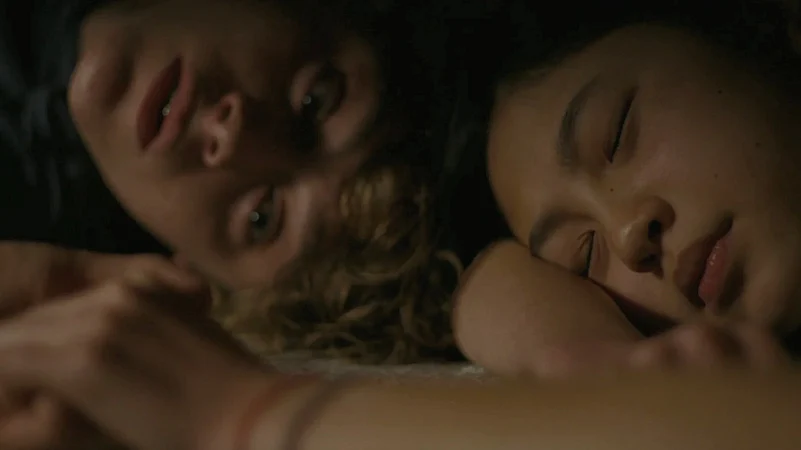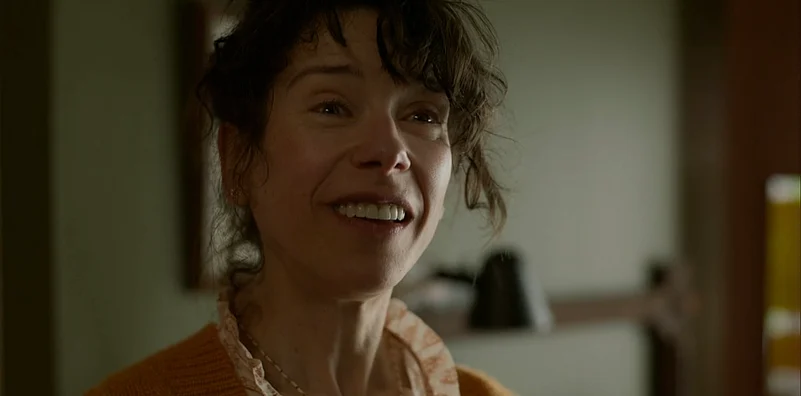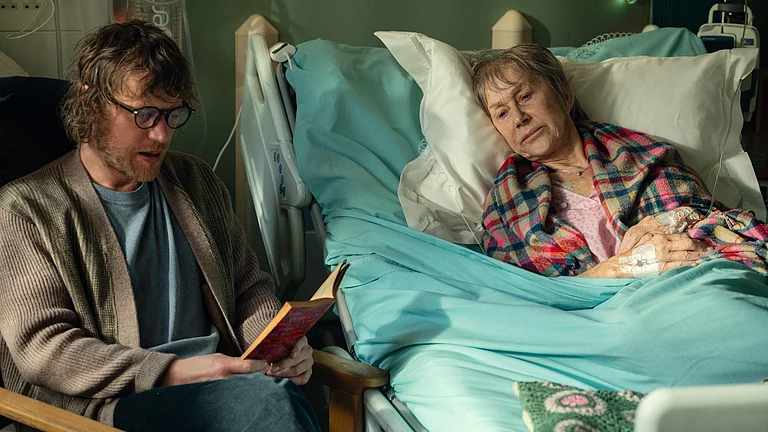
Bring Her Back (2025) is a horror film directed by brothers Danny and Michael Philippou and distributed by A24.
After a long delay, the much-awaited horror film finally released in the theatres on 22 August.
The cast features Sally Hawkins, Billy Barratt, and Sora Wong in leading roles.
Taking the best elements of horror—troubled orphans, sinister rituals, grief-stricken leads and the inevitable turns of fate, Danny and Michael Philippou return to the big screen with Bring Her Back (2025). Known first for their YouTube channel RackaRacka before making the leap to filmmaking, the brothers anchor this work as a sharper and more elevated successor to Talk To Me (2022), their A24-distributed debut that was praised for its chilling originality. The film has finally released in India after being held back due to its graphic nature.
Bring Her Back attempts to go beyond the simple house-trap narrative where danger lurks in familiar spaces. At its core, the film is also about gaslighting, the brutality of child abuse, and the systemic failures of institutions meant to protect the vulnerable. Horror has long used foster children as narrative catalysts, as seen in Orphan (2009), Mama (2013), or Case 39 (2009), where the outsider child often becomes a disruptive or malevolent force. What the Philippous argue here is different, emphasising that children marked by trauma are not inherently manipulative or destructive but rather conduits for evil spirits, repositories of adult cruelty, or cast off as burdens society refuses to carry.

In the opening scene, flashes of gory rituals flicker on a camcorder before the frame cuts to siblings Andy (Billy Barratt) and Piper (Sora Wong), introduced as misfits. Piper, a tender partially-blind girl, and Andy, a guarded brother marked by solitude, are still reeling from the sudden death of their father. Soon, they are placed in the care of foster mother Laura (Sally Hawkins) by Wendy (Sally Anne Upton), whose shrill sunshine cheer is sculpted to be believable but not entirely. Blaring ‘Alive’ by Empire of the Sun, she greets them into her supposedly warm estate. From the beginning, it is evident these children, already steeped in grief, are fated for deeper wounds, as the film refuses jump scares in favor of a steady tightening of unease. Laura quickly lovebombs Piper with affection so exaggerated it borders on unnatural, pressing to be seen as a mother-figure despite the brevity of their acquaintance.
A taxidermied dog, endearingly called PomPom, sits in her living room as she introduces it to Piper, foreshadowing her odd relationship with death from the onset. Soon, Oliver (Jonah Wren Phillips), another orphan, enters the frame with cropped hair, cold stare, shirtless frame—an unsettling boy whom Laura describes as mute since the death of her own daughter, Cathy. Yet his truth lies at the far end of the iceberg, submerged like the rest of Laura’s secrets.
Hawkins as Laura is chilling—her trembling face laced with an almost believable smile instantly reminds of Sue-Ann (Octavia Spencer) in Ma (2019). She spectacularly inhabits a fractured, obsessive mother whose mania eclipses reason, pushing her beyond every boundary, mortal or spectral, to pursue her single, unrelenting purpose. Why this is an excellent casting decision is mirrored also in Heretic (2024), another house-as-trap film, where Hugh Grant, long tied to the romcom hero, sharpens his familiar charm into something chillingly warped. Hawkins, in a similar vein, channels her inviting warmth only to strip it away piece by piece, descending into madness as her carefully maintained facade unravels.

In the fast-paced chaos of the film, Andy emerges as the one voice of reason, instinctively sensing the patterns of deceit around him. Haunted by the fractured memory of his father’s death, his existence now sharpens into a single purpose: protecting and remaining close to Piper. As the all-seeing audience, the intent is already laid bare in the expository title, leaving little room for speculation. What lingers is not the “what” but the “how,”. Still a minor, Andy’s world is shaped by relentless workouts, recurring nightmares, and an urgent need to shield Piper from her foster mother’s insidious efforts to divide them. Nobody believes him when he tries to flag Laura’s suspicious behaviour to the foster care facility and Wendy. The tension escalates with each act of violence and manipulation, until Andy begins to uncover the sinister depths of Oliver and Laura’s unsettling bond and the ritualistic secrecy binding their world.
On the surface, it is quite evident that the film takes inspiration from classics like Hereditary (2018), Run (2020) and Whatever Happened To Baby Jane? (1962) although it builds its own narrative language. Despite its linearity, the film sustains remarkable pacing, with every frame charged with clues, details and echoes that heighten its rewatch value. The house and the backyard pool operate as characters in their own right, shaping choices, escapes and even hosting the hidden rituals that haunt the narrative. Laura is tethered to the house as firmly as she is to Cathy’s memory, making departure impossible. Any semblance of ordinary life is stripped away, and coping itself becomes perilous, a path that threatens complete ruin. Laura embodies this danger most vividly, her grief curving into darkness, a mother who loved too deeply and lost too irreparably to ever reclaim the possibility of moving forward.

It is remarkable, the sheer pools of blood the characters spill in this film, staging a body-horror that is stomach-turning yet impossible to look away from. The trailer alone offers terrifying fragments: cultish sacrifices, burning red eyes, disembodied screams that anchor themselves to Laura, whose involvement in black magic is evident. She seals her property within a white circle, studies grainy VHS tapes of grotesque rituals, and drags the volatile Oliver into her orbit. Though a sliver is left for imagination, as mentioned before, the title, the trailer, and the film itself reveal almost everything from the outset. What lingers is the dread of watching fate creep closer, paired with the futile hope that it might be avoided. The narrative insists on making the audience sit through its many metaphors of grief, where body horror often turns excessive, even grotesque, in service of the allegory—though crafted with striking precision.
As much as Bring Her Back strains to evoke tragic grief through Laura’s descent into madness, it withholds the same amount of compassion from Andy, Oliver, and even Piper, who remain fractured under the weight of her violence and trauma, leaving no semblance of closure. Healing, in the end, isn’t offered but rather snatched from the face of calamity. By its final stretch, the film feels more punishing than cathartic, as it proves to be quite a heavy watch. Bring Her Back ultimately stands as a well-intended portrait of grief and its corrosive aftermath.



























